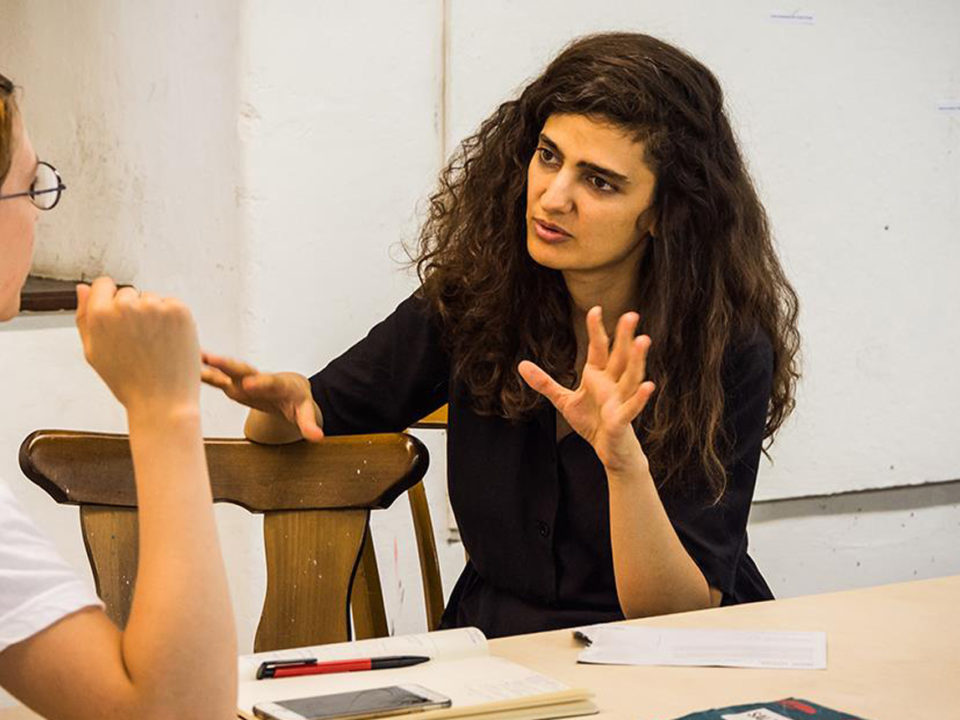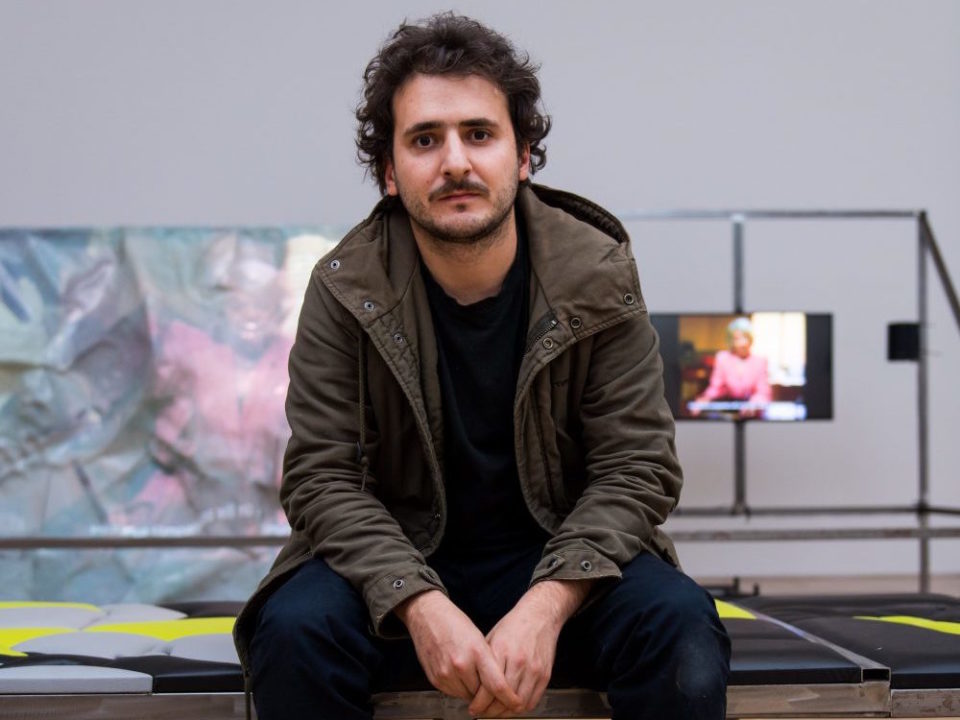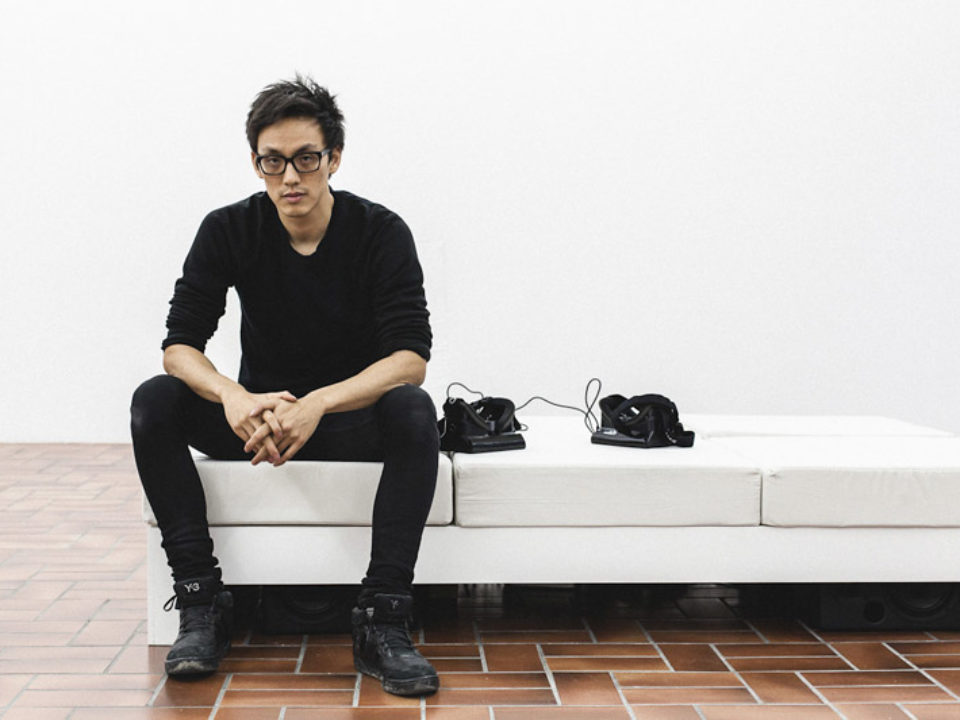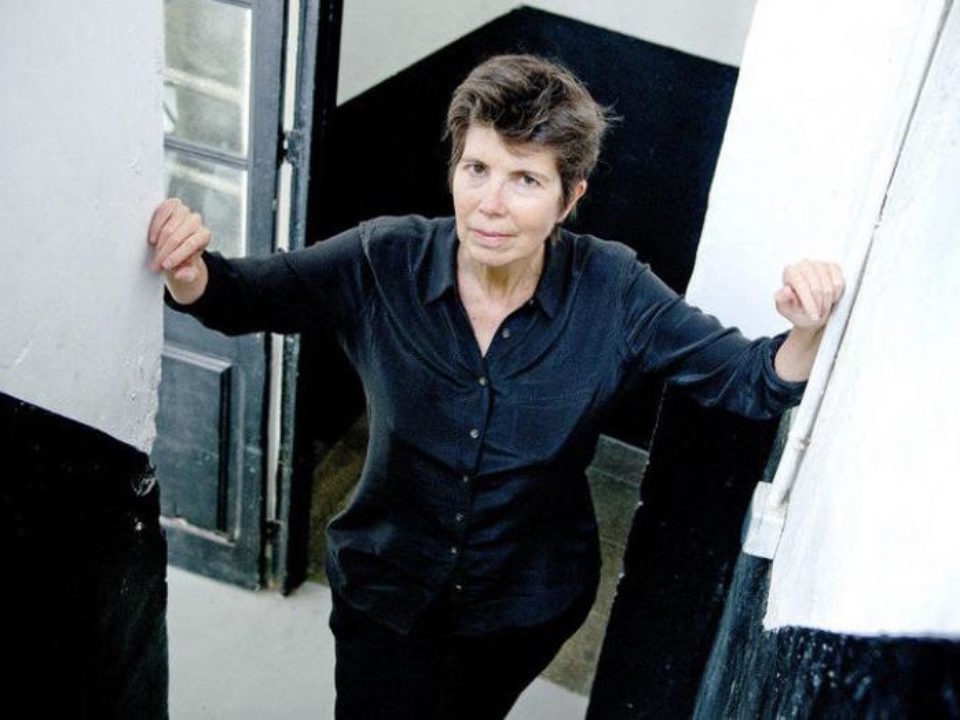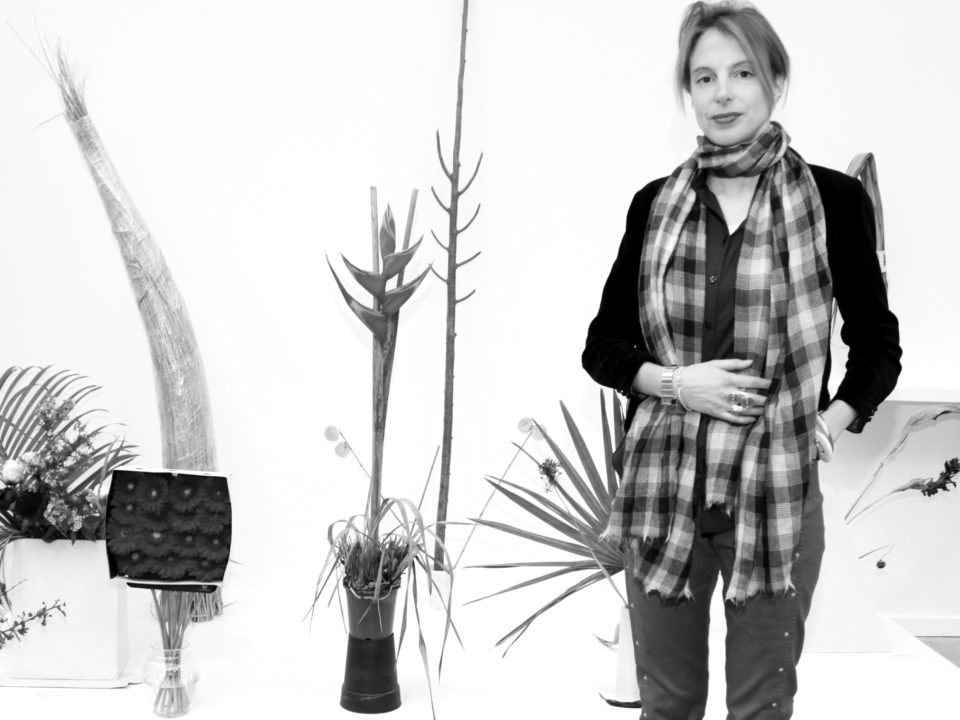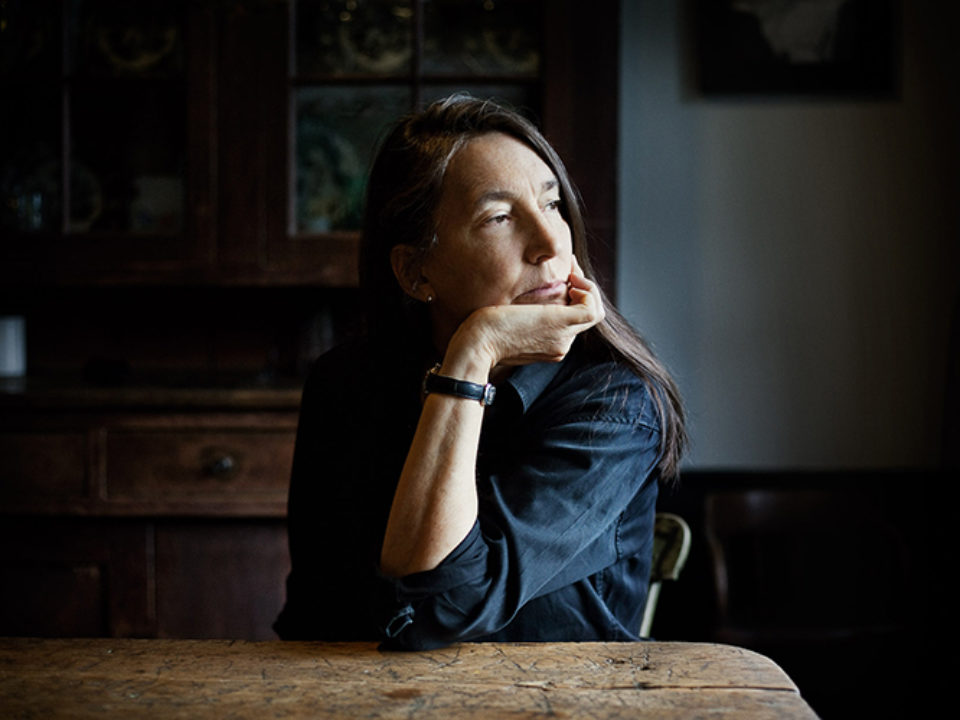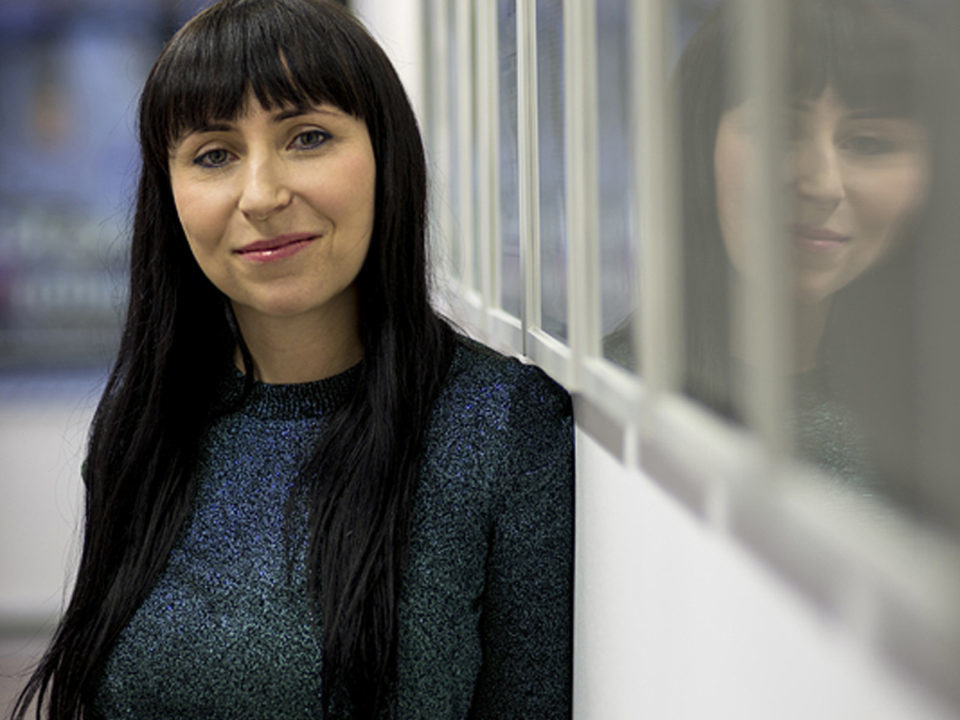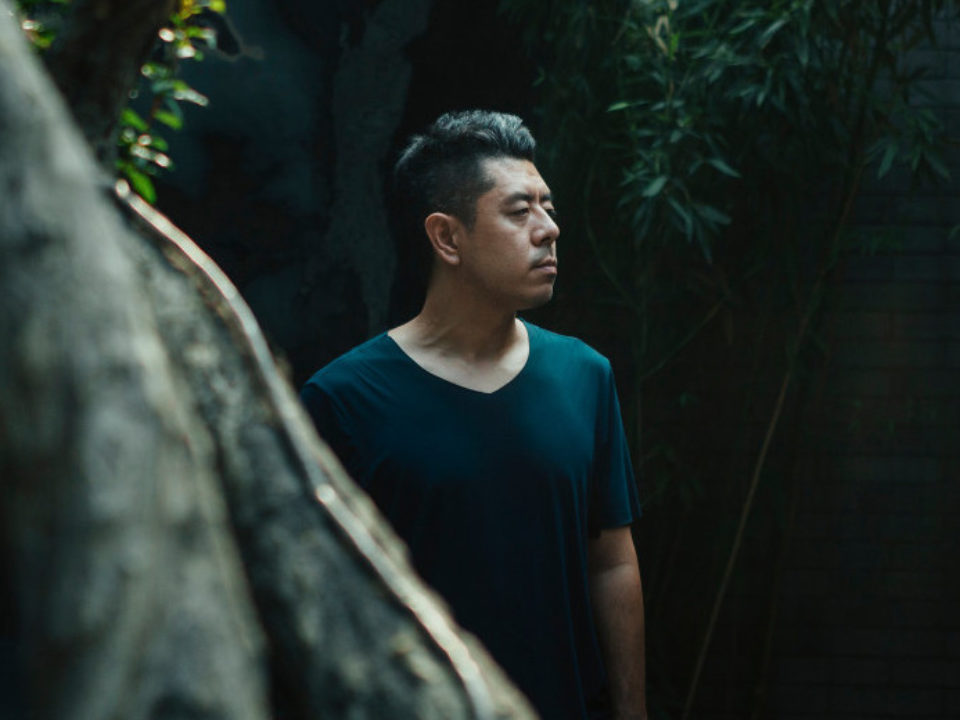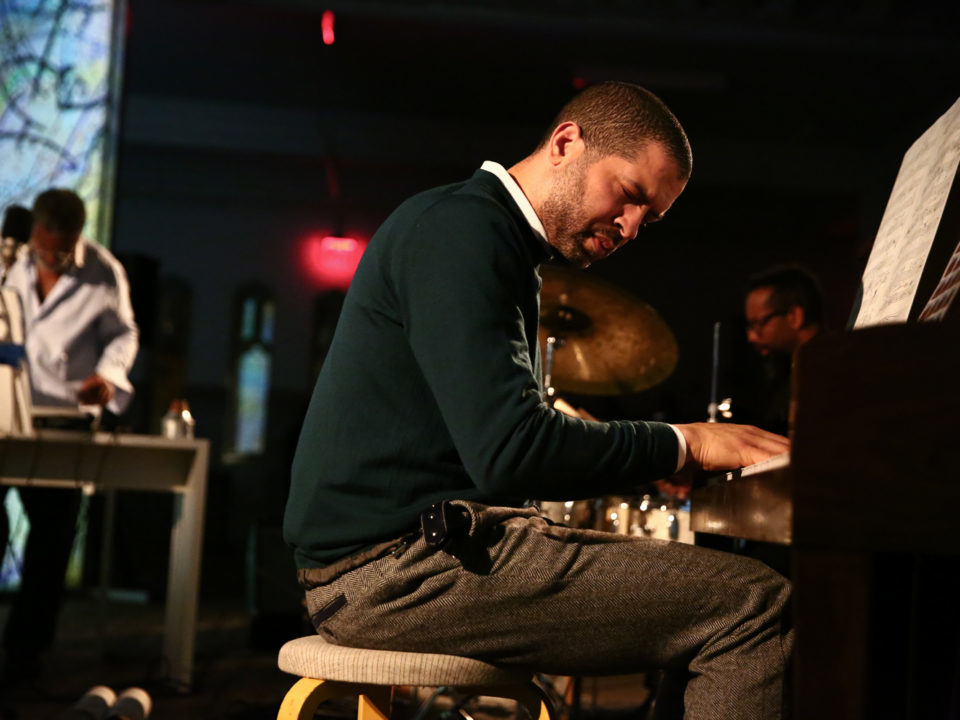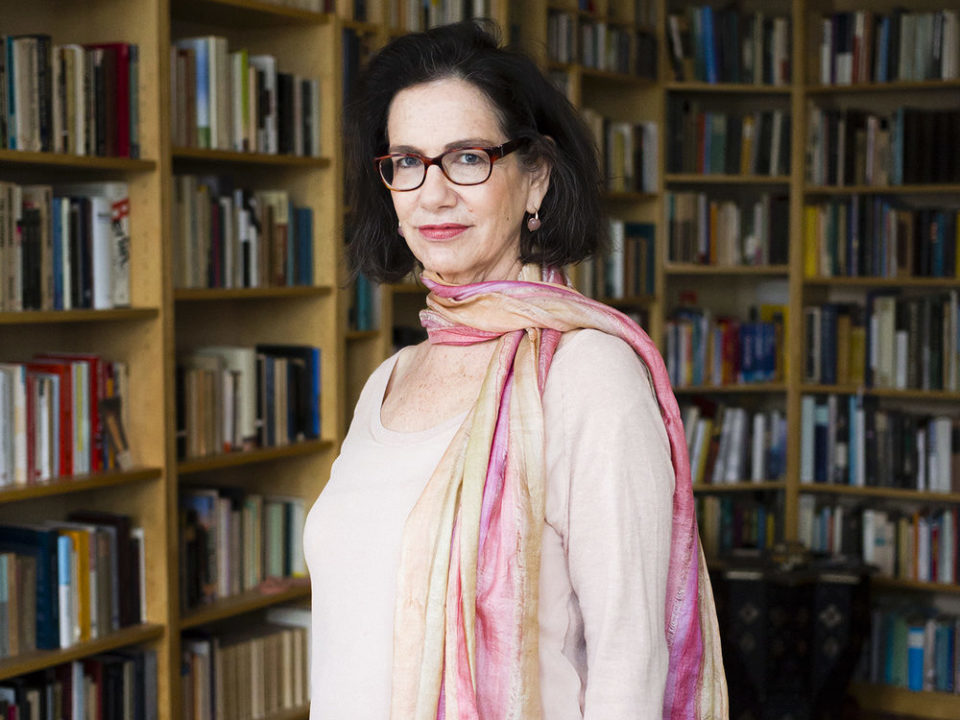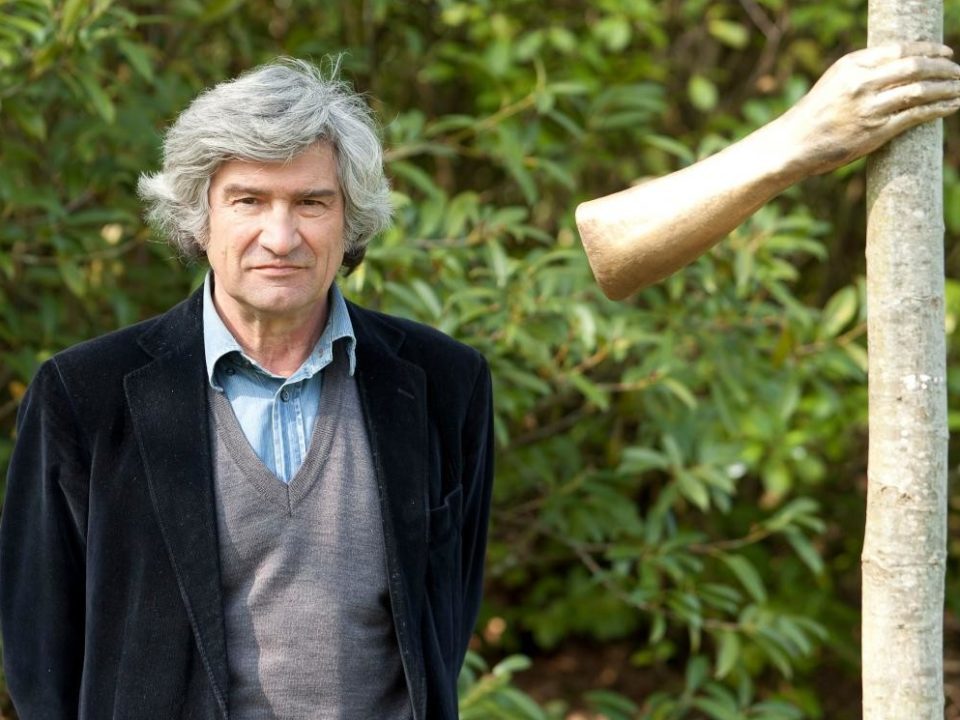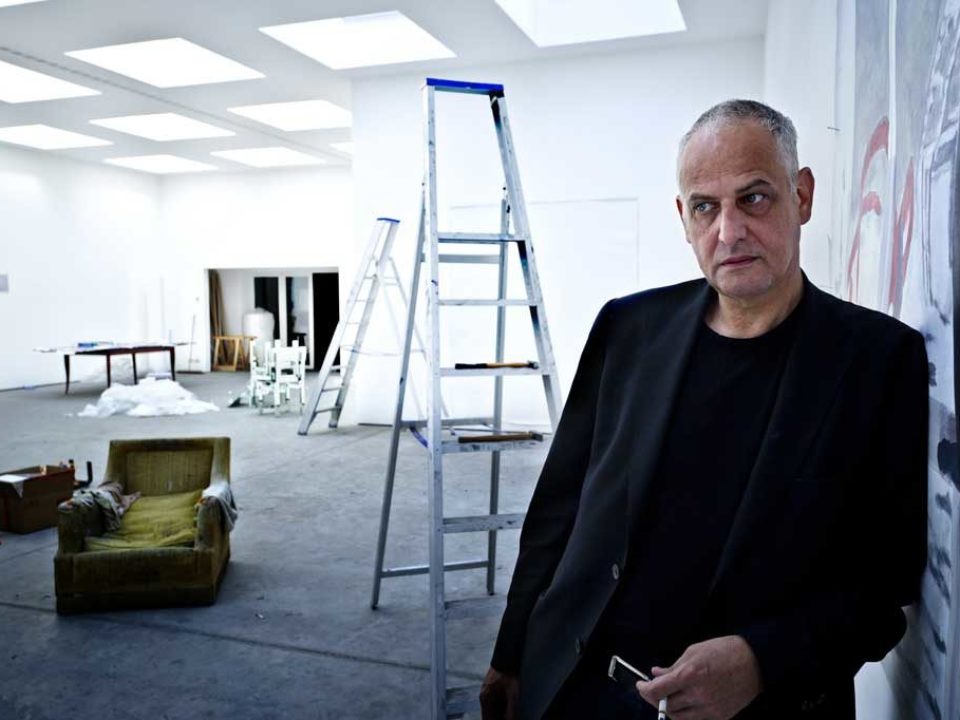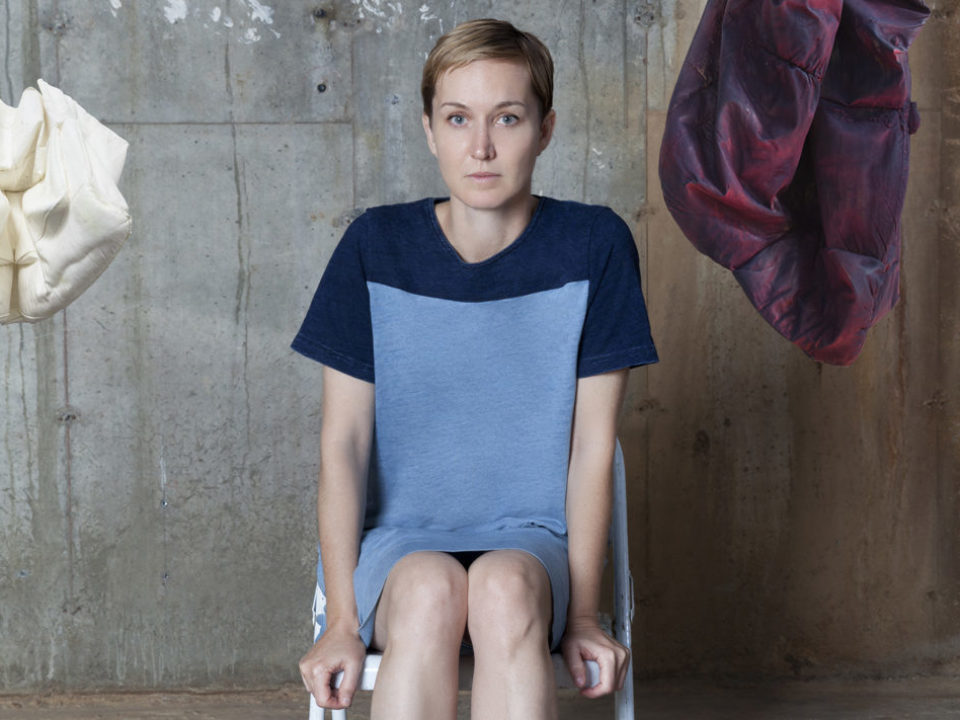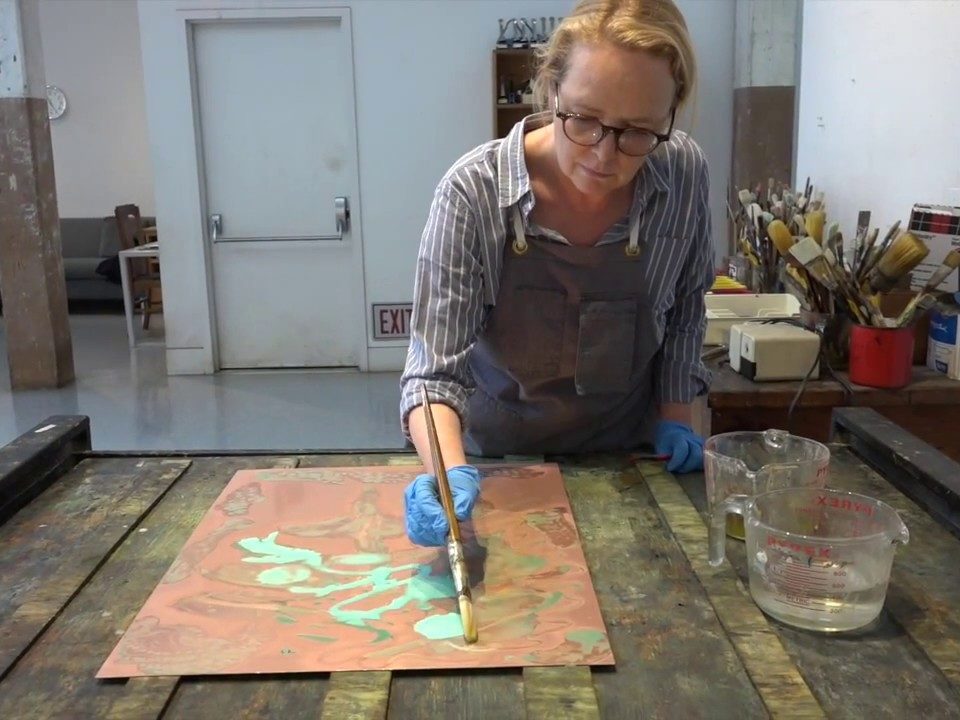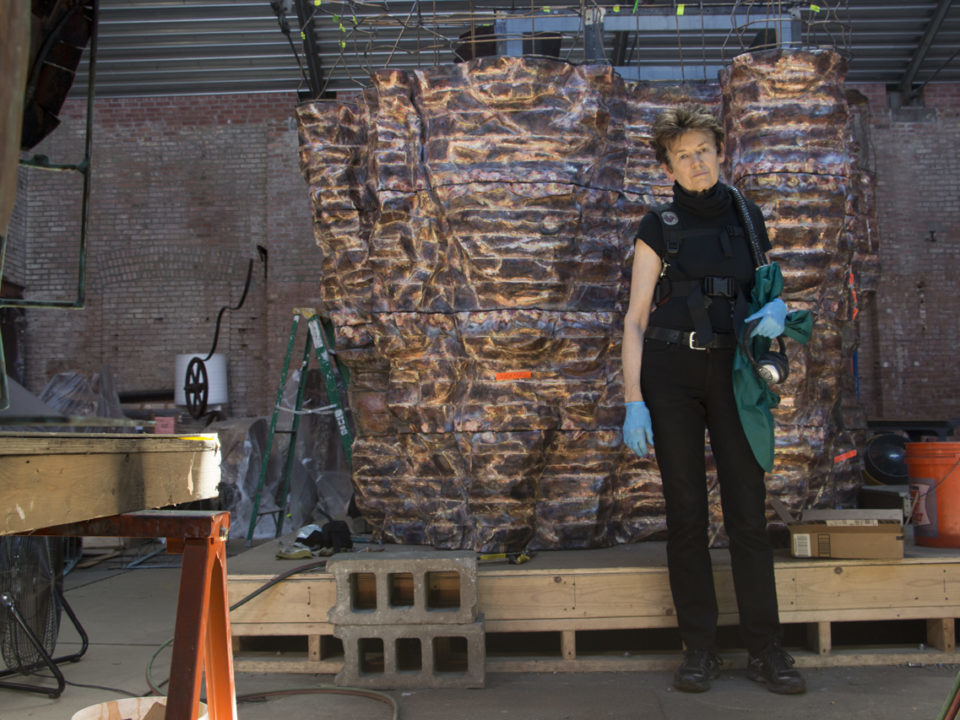Marwa Arsanios
“You keep on trying. You know that most probably you’re going nowhere. But you keep on trying. This is a strategy — this is being an artist, actually. Trying, trying forever. It’s the opposite of a utopian model. Making a space to think, to take time, to do research, to just talk, sit and talk for hours, over a drink, slowing down everything. This is a way of trying: slowing down every possibility of production.”
Matthew Barney
“My initial entry point into New York was through the vertical landscape, and how it felt to be inside the matrix of the city. It felt comforting and familiar to me. You have these conditions in the landscape in the west, where on one side you have a kind of horizontality and openness, but then you come up against a mountain front, and then you go into the ravines of that mountain system, and you’re held. I think it was on an emotional level that I connected with New York, through its extreme landscape.”
Neïl Beloufa
“I wanted to play with my frustration with cinema — I have this frustration, like many people. I have this fantasy that it’s the last glittering place, or it’s one of the last. I think in our parents’ generation, it was still seen as impressive to be a writer or a doctor or a lawyer. Now, in society, everyone is a singer or a filmmaker or an actor. Art is coming back, as a social category. Being a doctor, it’s like, why?”
Aslı Çavuşoğlu
“I came here with my luggage, but I don’t think I can go back, at least for a month. It appears to me that Turkey is getting very dark. I’m not scared of Erdoğan. I’m scared of this darkness, of feeling hopeless. Maybe I would do much better, not only for my physical being but as an artistic being, with the hope that can only be provided by distance.”
Ian Cheng
“As a human, I have a great deal more interest and awareness toward changes in physical material, and a lot less intuitive understanding of transformations that occur on a soft level. But if we stop to think about soft changes, for example, I feel like we have ‘Uber consciousness’ now. The idea that you can just get into a stranger’s car, fully trust them because of a rating system, and then literally just exit the car, without any transaction, or with that whole transaction masked. In some small, tiny, tiny way, that is a different kind of consciousness.”
Elizabeth Diller
“I think it was a kind of lightning rod for so many anxieties about the power of MoMA. The expansionist mentality. The previous renovations that people may not have been happy with. A midtown rezoning that everyone was afraid of, and totally justified concerns about removing buildings that still had life to them. I can’t say that I’m on the side of the developers. I’m on the side of the preservationists and the architectural community when it comes to saving buildings. And we do our best to try to do that, and sometimes it just can’t be.”
Liz Glynn
“Today art’s value is mostly speculative, but I’m rather old-fashioned. I believe in falling in love with an object, and that doesn’t square at all with how people value art at this point. I’m a little bit stubborn: I want to make all the plates in my house, I want them to be just so, I want to care about everything. And that is a different set of values.”
Camille Henrot
“Instagram hashtags and memes make heavy use of the days of the week. Thursday doesn’t mean Thursday anymore, it means memory. Saturday doesn’t mean Saturday anymore, it means going outside your boundaries. The days of the week became moods. They became worlds of signification within a shared digital society.”
Jenny Holzer
“Compared to the legal character of the documents, the aesthetics of them can be goofy, or completely insufficient to express the terrifying nature of the information. I’m interested in how to negotiate that divide — between information that’s really horrifying, and the expression of that information as flat or bland or silly.”
Agnieszka Kurant
“There’s a huge naïveté prevailing in the cultural field. The whole idea that somebody declares that they ‘do not participate in the art market system’ and that they can ‘refuse’ is a fiction. Because artists are always creating social capital around their work, and different artists do it in very different ways.”
Ma Yansong
“When I was studying in the 90s, the mayor of Beijing suggested that all the new buildings should have some visual elements of ancient Chinese architecture. After that, if developers needed approval from the city for a building design, they would show the model of a modern tower and keep a model of a miniature pagoda roof in their pocket. If the modern building wasn’t accepted, they put the pagoda model on top of the modern model, and then it would get approved.”
Lucy McKenzie
“When I think about the women who made clothes in the 20s and 30s, people like Vionnet, and Schiaparelli, and Lanvin, and Chanel…everybody knows they are geniuses, but at the time they weren’t artists. They were ‘dressmakers.’ They thought all the time about these ideas we associate with modernism: the figure in the city, the catwalk, all these reflections. But it took a male artist to harness them.”
Jason Moran
“In conservatories, the thing that professors most want their students to understand is how to move around on their instrument, to have some bit of flexibility. If you are able to achieve that, and only a very small percentage of musicians are actually able to achieve that, you can improvise. But how do they tell you how to be flexible among the art forms, the big-A art forms themselves?”
Susan Neiman
“Look, I think it’s never the case that theory won’t serve. I don’t think that there’s ever a point when it’s right to give up on thinking about things properly. What I do think is that theory alone is not enough to break the tyranny of global neoliberalism, which has this amazingly wonderful ability to adapt itself and to co-opt things and people. If we don’t break that, we’re lost.”
Christodoulos Panayiotou
“I belong to a generation in Cyprus that profited immensely from the European project, in terms of mobility. The way I studied, the way I moved, Erasmus and all that…. I am definitely a child of Europe, and it’s extremely destabilizing to see all this falling apart, and simultaneously terrifying to imagine what is to come. We are not even trying to construct something better — for the moment, all we’re doing is trying to push away the disaster, as long as we can.”
Giuseppe Penone
“I’m certainly very happy people are working on climate change. But if you look at the climate more broadly, you can consider that this fear is ultimately a fear of human survival. It’s not about the survival of the planet, or of nature. What is nature? Nature is whatever is outside; nature will be present even if the human species goes extinct. If you think of humans as part of nature, rather than above nature, then our concerns and nature’s concerns should be equal.”
Torbjørn Rødland
“The most interesting challenge seemed to be photographing beautiful women as a straight male. Something that wasn’t allowed. Something that I’d learned I couldn’t do. But I also knew that if it were possible at all, it would be because of the feminist projects that I had looked at as a student. It would be because of artists like Cindy Sherman, who had created another space around images of women and around the reading of them. And then the question became: how can that be carried forward, and partly blown to pieces, by my doing it?”
Luc Tuymans
“I’ve never made a mystery about the fact that I use imagery that exists, that comes out of a newspaper or anywhere else. Which I think is elemental as a question of freedom of speech. If you can’t do that anymore, in what way can you actually be contemporary? Imagine if I had asked the PR of Condoleezza Rice to make a painting of her!”
Kaari Upson
“Loss, death, experiencing that through the body; the inability to conceptually work through these things…. In a lot of my schooling, I dealt with questions of the abject. When something is outside the body it becomes disgusting, but when it’s inside it’s as natural as blood. Those issues are very ingrained in me. They follow me everywhere. I like to look for new abject things, or taking something that might not be abject and fully flooding it with possibilities.”
Charline von Heyl
“What I find revealing is that everybody chooses their own painting of mine. I have very rarely felt that people like my work. They always like this painting or that painting or another painting…. And that shows, already, that there is agency in whoever looks. So, yes, of the hundreds and thousands who run through for museums, there will be maybe 50 people who are like that. But that is satisfactory.”
Ursula von Rydingsvard
“I tried the tree-trunk thing, and it was awful! First of all, you can never forget that it’s a tree trunk; and second of all, the tree trunk implies what it might want. I would go nuts; the branches wouldn’t work for me. But these planks of cedar are neutral. They don’t ask anything of you. They’re like a blank piece of paper.”
